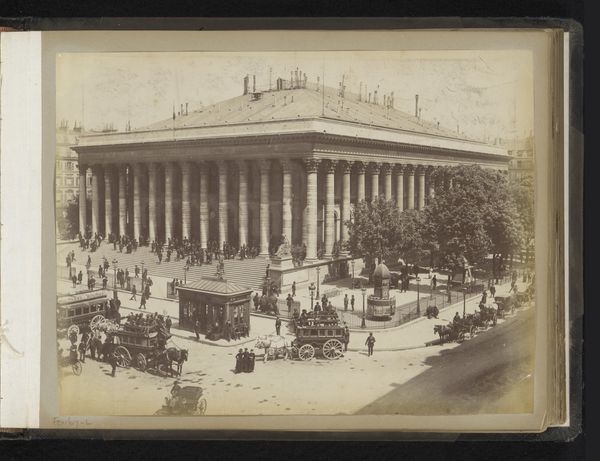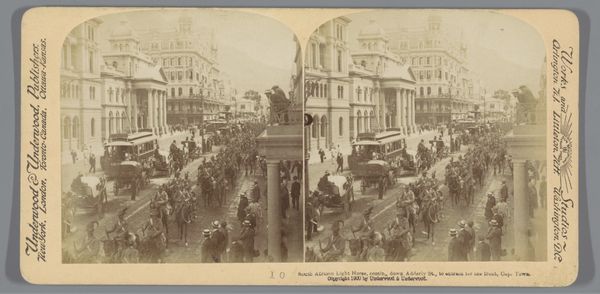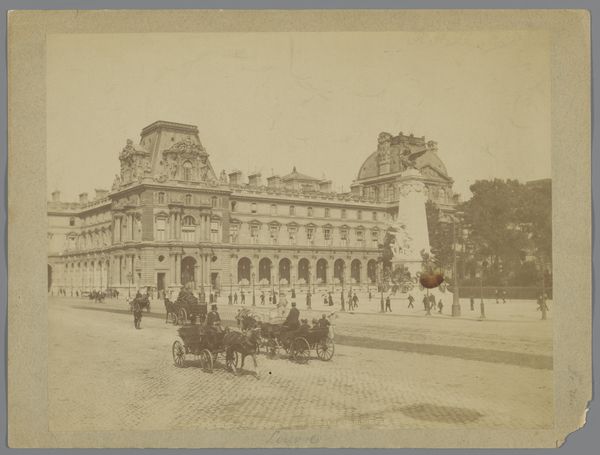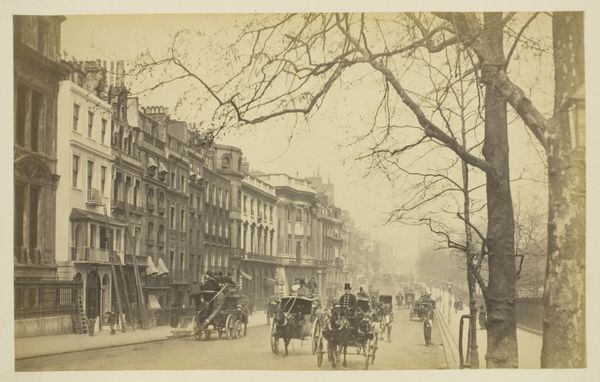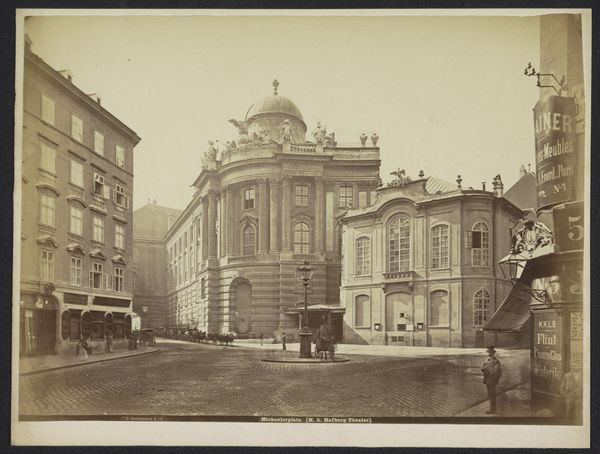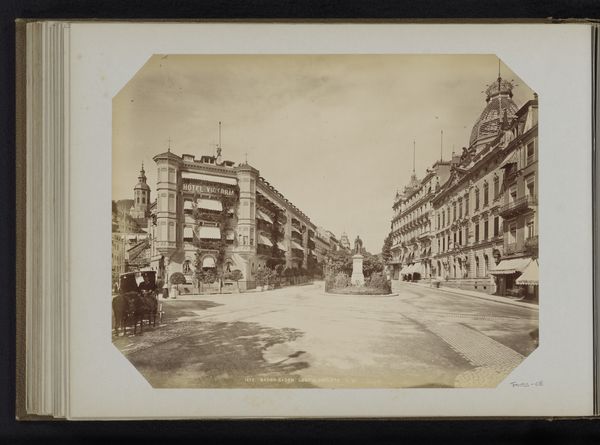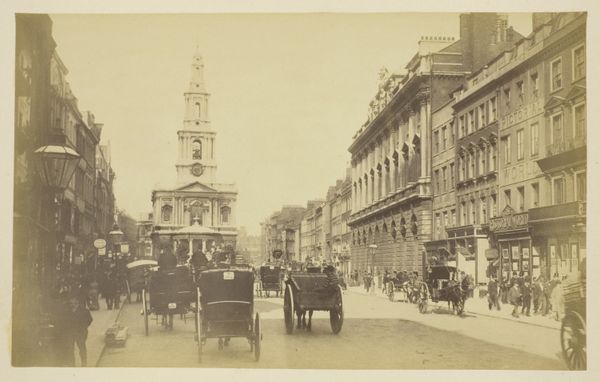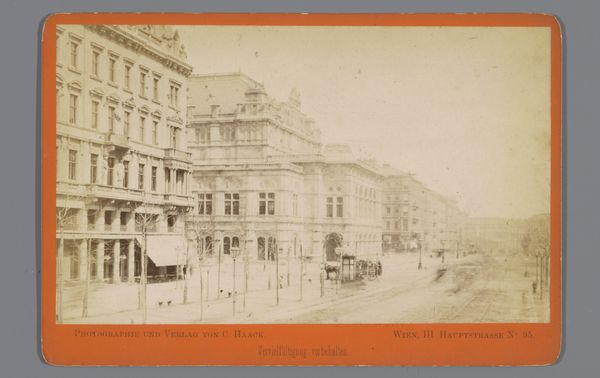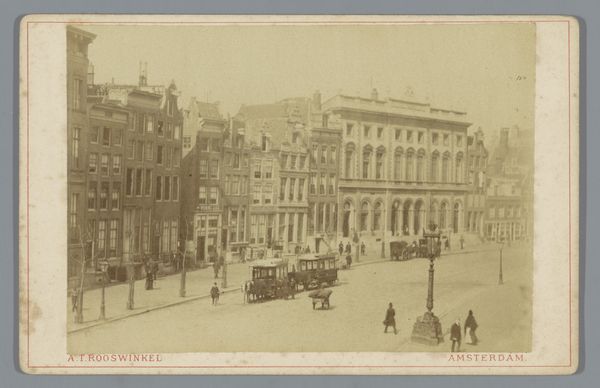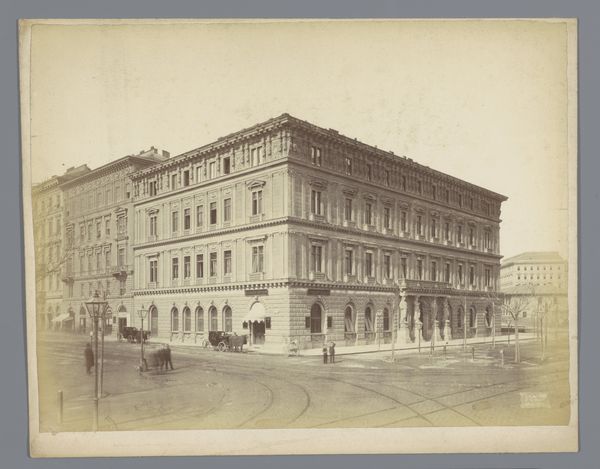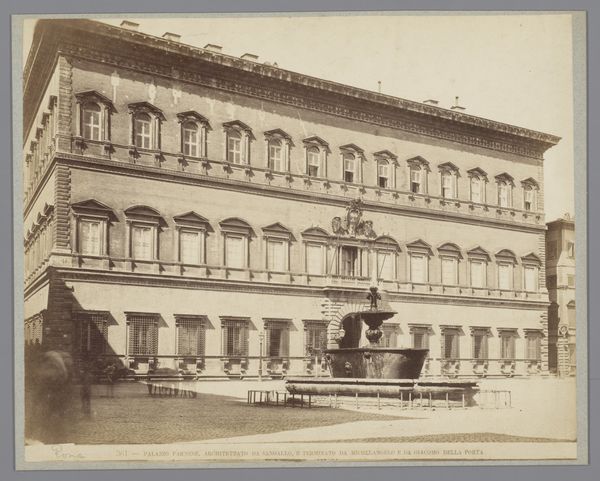
print, photography, gelatin-silver-print
# print
#
photography
#
gelatin-silver-print
#
19th century
#
cityscape
#
building
Dimensions: height 109 mm, width 167 mm
Copyright: Rijks Museum: Open Domain
Curator: Let's delve into this gelatin-silver print from 1881. It's entitled “View of the Anhalter Bahnhof in Berlin" by Sophus Williams. The imposing station dominates the background. It evokes a palpable sense of both anticipation and loss given its later destruction in World War II. What are your immediate thoughts? Editor: The mood is very subdued, almost ghostly. The muted sepia tones combined with what appears to be a nearly empty street contribute to that feeling. I’m drawn to the rows of horse-drawn carriages; I find myself considering their role in urban transit and the labor involved in maintaining them. Curator: It's tempting to view this solely through the lens of grand architectural design. But the image asks us to think about societal forces, the development of Berlin, its role in facilitating migration and connection across borders, its promises, and, perhaps, its exclusions, especially through class distinctions evidenced by access to rail travel. The Bahnhof stands not just as a building, but as a testament to power. Editor: Precisely. The means of transit displayed—these carriages—underscore that power. What socioeconomic realities determine who utilizes such a grand station and by what means? What raw materials shaped the coaches and tracks, and what laborers were exploited in their making? The building looms like a giant monument to industrial progress—its impact and cost both clearly relevant. Curator: The choice of medium here is itself telling. The early adoption of photography by Williams made possible the circulation of imagery and propaganda in a new industrial age. The gaze through the camera, even at this apparently "objective" scene, cannot be neutral. Williams must be factored in as a producer and mediator, particularly since there were various versions of the print circulating widely. Editor: It all goes back to process and how images shape, reflect, and manipulate our reality, I would be interested in comparing a number of different examples in the historical archive. What constitutes the 'original' image and how have later reproductions informed social memories. Curator: It’s fascinating to remember that what might now seem quaint captured a transformative era of rail transport. This print lets us consider intersections of transport, class, industrial development, and image reproduction. Editor: Agreed, engaging with this work is compelling because it underscores the social dynamics involved in both building and documenting a city in flux.
Comments
No comments
Be the first to comment and join the conversation on the ultimate creative platform.
